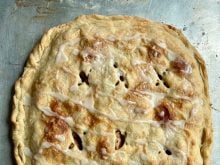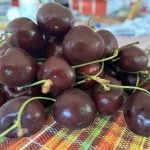School is about to start for another year. Our grandkids have new teachers and are anxious to meet them. My recollection of starting a new year was the pleasant smell and crisp feel of new notebooks and the anticipation of starting anew.
While water bottles weren’t a part of my school days, they are now. The following safety information about their use is important for all of us, including our little ones as we send them to school. I’m afraid to recall the dangers of what we had – the water pail and one dipper for all to use.
Read Also

From farmer to award-winning distiller
Pivot Spirits showcases transition from farmer to distiller with provincial award-winning results in Alberta for Lars Hirch
I was recently told of a teacher who had her students keep a water bottle on their desk, thus eliminating the jumping and up and down to go to a water fountain. The same water bottles stayed on their desk day after day. Were they thoroughly washed every day? What about the bottles in your child’s lunch box or their hockey bag? How safe are they? Do you leave your water bottle at work or in your car and reuse it the next day without washing?
Reusing water bottles without washing them could make you sick.
Several studies have checked the bacteria in water bottles. Three out of four bottles tested from an exercise club had bacteria. A study of water bottles at a Calgary elementary school found bacteria in kids’ bottles that would prompt health officials to issue boil-water advisories had the samples come from a tap. The bacteria likely came from the kids’ hands and mouths over time as they repeatedly used the same bottles without washing them or allowing them to dry.
Reusable bottles should be washed thoroughly every day and allowed to air dry.
Bottles that you buy water, pop and juices in are not meant to be reused. While people may think they’re doing a good deed for the environment when they reuse these bottles for anything from orange juice in a bagged lunch to a week’s worth of water refills from the office water cooler, researchers say they could be risking their health. Dangerous bacteria and potentially toxic plastic compounds have been found.
And repeated washing of these bottles might not be a good idea either. A study conducted in the United States suggests the kind of thorough washing that could kill bacteria might accelerate the break-down of the plastic, potentially causing toxic chemical compounds to leach into the liquid inside. Plastic experts say the bottles are safe, but conclude little is known about what happens when the bottles are used over and over again.
The Canadian Bottled Water Association advises against reusing these containers altogether. It says they are made for single use and should be recycled afterward, not reused.
Antibacterial soaps
The University of California School of Public Health tells us that we should avoid using antibacterial soaps, even if they account for 75 percent of liquid and 30 percent of bar soaps on the market.
A Dutch study a few years ago found that these soaps did not significantly reduce the dangerous foodborne germs salmonella and E. coli bacteria. As well, the soaps do little or nothing to ward off infection. This was shown in a recent study in Manhattan, in which 238 families with young kids were given a year’s worth of cleaning supplies and were monitored for symptoms of infections. Half the families got antibacterial products, while the other half used regular products. The result was that those using the antibacterial products were just as likely to develop a cough, fever, sore throat, vomiting, diarrhea and other symptoms. That’s not surprising, since most infections such as colds and flu are caused by viruses, and antibacterials kill only bacteria.
Handwashing with any soap is the best infection fighter, not because it kills germs, but because it removes them and they go down the drain.
Cooking large tapioca
Dear TEAM: Re: your article on tapioca (July 8, 2004). My husband and I much prefer pudding made with the large tapioca and I have often wondered why the recipe on the package calls for soaking it so long. I soak it only one hour in water to cover, and cook with the milk in a double boiler about one to 11/2 hours, and it is well cooked.
Actually I wonder if the large tapioca is as big as it used to be? I seem to remember the tapioca puddings my mother baked in the old wood stove in the Thirties as having bigger “fish eyes” and it was so delicious. I just looked up tapioca pudding in the good old Blue Ribbon Cook Book and it calls for soaking it only one hour. It cooks nicely in the one to 11/2 hours. Perhaps more people would use it if they found it didn’t take so long to make. – M.R., Spalding, Sask.
Dear M.R.: I tried the shorter soaking time you suggest and it worked for me, too. I found a hot water soak softened the tapioca more than a cold water soak.
Halvah calories
Dear TEAM: What is the caloric and nutrient value of halvah, the sesame seed sweet? What amount would be considered a serving size? – A.B. Fairview, Alta.
Dear A.B.: A serving size would depend on your sweet tooth. It is a rich food so perhaps one ounce (28 grams) could be enough for a serving. That is about the size of half a chocolate bar.
Nutrition facts for plain halvah (without added ingredients such as dried fruits and nuts) – Serving size: one ounce (28 grams); calories 136; total fat 6.1 g; saturated fat 1.1 g; cholesterol 0 mg; sodium 55 mg; total carbohydrates 16.9 g; dietary fibre 1.3 g; protein 3.5 g; calcium 9.2 mg and potassium 52.4 mg.
The calories from fat are 40 percent, from carbohydrate 50 percent and from protein 10 percent.
Source: CalorieKing.com.
Halva is a confection or sweetmeat originating in the Balkans and eastern Mediterranean regions. It is made from ground sesame seeds, honey or sugar syrup, with other ingredients such as dried fruit, pistachio nuts, farina (semolina) and almonds sometimes added. Cinnamon and cardamom are also frequently added. The ingredients are blended together and then heated and poured into bars or long loaves.
The name means sweet meat and various forms of the word may be found in Turkish, Greek, Yiddish and Arabic.
Corn chowder
A friend recently asked me for this recipe. Apparently at one time it showed up at the rink in my pot.
4 slices bacon
1 medium onion, chopped
2 medium potatoes , peeled and cubed
1 stalk celery, chopped
1 can (12 oz.) niblet 341 mL or creamed corn, undrained
1 can (10 oz.) soup 284 mL
condensed cream of celery or chicken soup
2 cups milk 500 mL
1/2 teaspoon salt 2 mL
1/4 teaspoon pepper 1 mL
Chop bacon into 1/2 inch (one cm) pieces. In a heavy saucepan, cook bacon until crisp. Remove bacon. Drain excess fat, retaining about two tablespoons (30 mL) in the saucepan.
In the retained bacon fat, sauté onion, potatoes and celery until tender. Return bacon to the saucepan and add the remaining ingredients.
Bring to a boil. Simmer until vegetables are thoroughly cooked.
Fresh or frozen corn can be used instead of the canned corn.
Yield: about six cups.
Alma Copeland is a home economist from Elrose, Sask., and one of four columnists comprising Team Resources. Send correspondence in care of this newspaper, Box 2500, Saskatoon, Sask., S7K 2C4 or contact them at team@producer.com.














